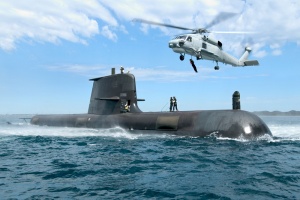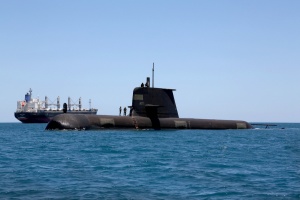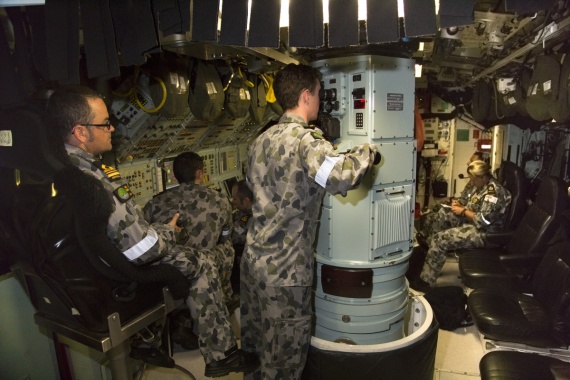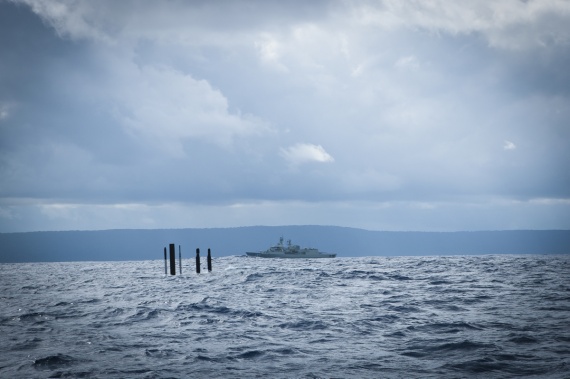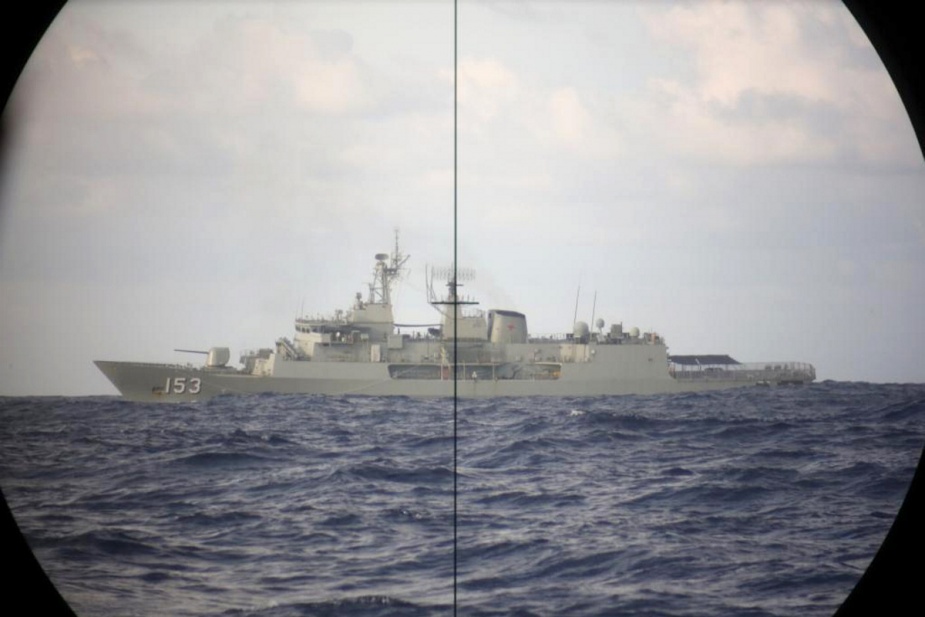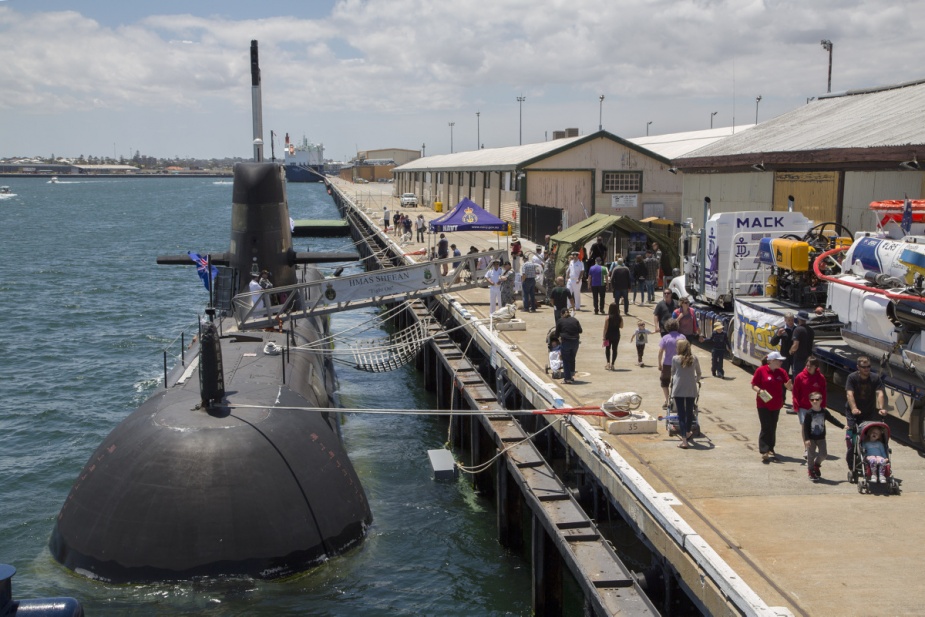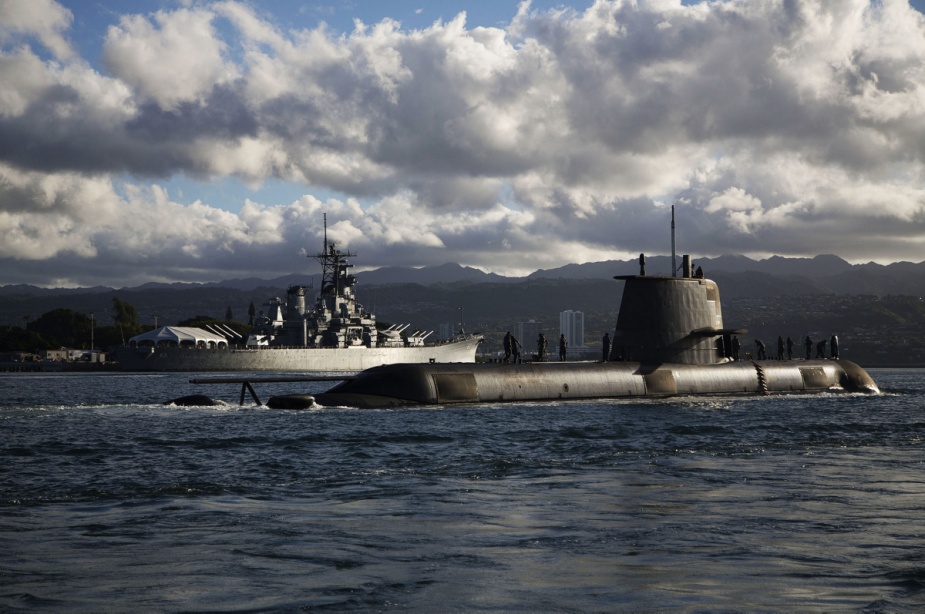HMAS Sheean
| Class |
Collins Class |
|---|---|
| Type | |
| Pennant |
S77 |
| International Callsign |
VMLS |
| Motto |
Fight On |
| Home Port | |
| Builder |
Australian Submarine Corp, Adelaide |
| Laid Down |
17 February 1994 |
| Launched |
1 May 1999 |
| Launched by |
Mrs Ivy Hayes (sister of Ordinary Seaman Teddy Sheean) |
| Commissioned |
23 February 2001 |
| Dimensions & Displacement | |
| Displacement |
|
| Length | 77.8 metres |
| Beam | 7.8 metres |
| Draught | 7 metres |
| Performance | |
| Speed |
|
| Range | 11,500 nautical miles |
| Complement | |
| Crew |
|
| Propulsion | |
| Machinery |
|
| Armament | |
| Missiles | McDonnell Douglas Sub Harpoon Block 1B (UGM 84C); active radar homing |
| Torpedoes | 6-21 in (533 mm) fwd tubes. Gould Mk 48 Mod 4/6/7; dual purpose; wire-guided; active/passive homing |
| Mines | 44 in lieu of torpedoes |
| Physical Countermeasures | Decoys: 2 SSE |
| Electronic Countermeasures | ESM: ES-3701U; intercept and warning |
| Radars | Navigation: Kelvin Hughes Type 1007; I-band |
| Sonars |
|
| Weapon Control Systems | AN-BYG 1. Link 11 |
| Resources | |
| News Articles | |
| Image Gallery | |
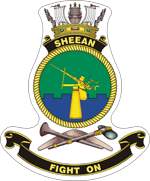
Based at Fleet Base West in Western Australia, HMAS Sheean was the fifth of the six Collins Class submarines to enter service in the Royal Australian Navy. These submarines are a formidable element in Australia's defence capability.
Sheean was launched in Adelaide, South Australia by Mrs Ivy Hayes (Ordinary Seaman Sheean's sister) on 1 May 1999 and commissioned in Fremantle, Western Australia on 23 February 2001 along with the fourth Collins Class submarine, HMAS Dechaineux.
HMAS Sheean's operational characteristics and range have been tailored specifically for its defence and two-ocean surveillance role in the Royal Australian Navy. Designed to be as quiet as advanced technology can achieve, Collins Class submarines have been developed from five generations of submarines designed and built by the Swedish Navy.
One of the first submarines to be totally designed by computers, HMAS Sheean boasts a vast range of features. They include a high-performance hull form, highly automated controls, low indiscretion rates, high shock resistance, optimal noise suppression and an efficient weapons handling and discharge system.
The submarine moves silently on electric power supplied to the propulsion motor by banks of new technology lead-free batteries. The batteries are charged by three onboard diesel generator sets.
The sophisticated combat system gathers its intelligence from its sensors, computes the input and then launches and directs weapons.
HMAS Sheean has successfully conducted a range of activities throughout the region in support of Australian Defence Force exercises, operations and the government's strategic directives.
HMAS Sheean is the only Australian naval vessel to be named after a sailor, Ordinary Seaman Edward 'Teddy' Sheean VC who distinguished himself in action during the Second World War. Ordinary Seaman Sheean was lost when HMAS Armidale (I) was sunk on 1 December 1942 off the Timorese coast. Armidale (I) had survived two days of bombing before being struck by a Japanese aerial torpedo. During the action Ordinary Seaman Sheean was wounded and rather than abandoning ship with the rest of his shipmates, he strapped himself to the aft Oerlikon Gun and continued to fire at the attacking Japanese aircraft until Armidale (I) sank. Sheean was mentioned in dispatches for his bravery. On 1 December 2020, His Excellency General the Honourable David Hurley AC DSC (Ret’d) Governor-General of the Commonwealth of Australia presented the insignia of the Victoria Cross for Australia to Teddy Sheean’s family at a ceremony held at Government House in Canberra, ACT.
History of the Crest
The Blazon
Vert, in base embattled azure an oerlikon.
Motif Description
The blue field represents the Navy and the sea. The green field represents the farming fields and Mt Roland of Sheean's home town of Latrobe. The Oerlikon represents the weapon which Sheean manned to the last. The division of the fields is known in heraldic terms as "embattled" and in this context signifys that Sheean's last stand was during battle.

